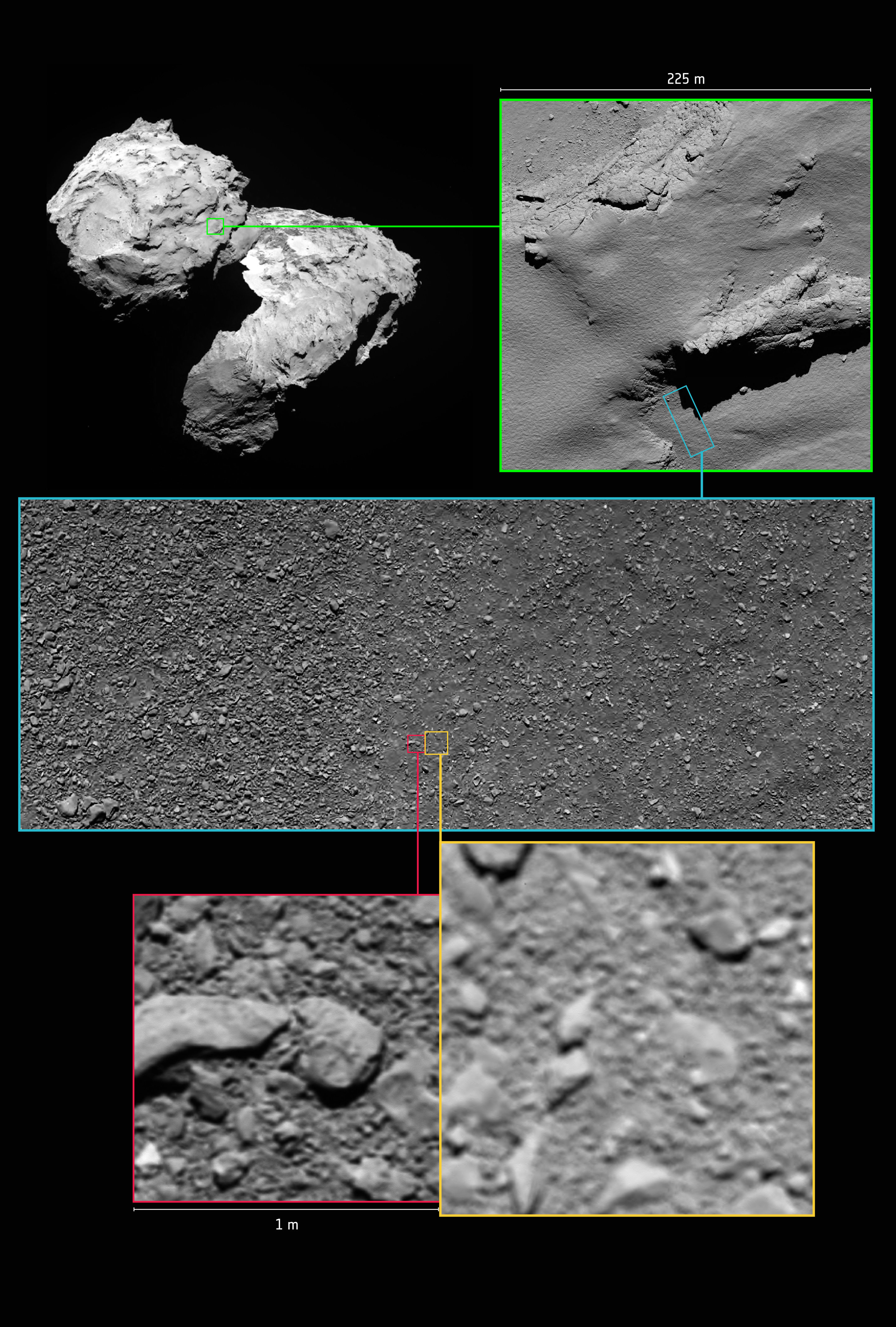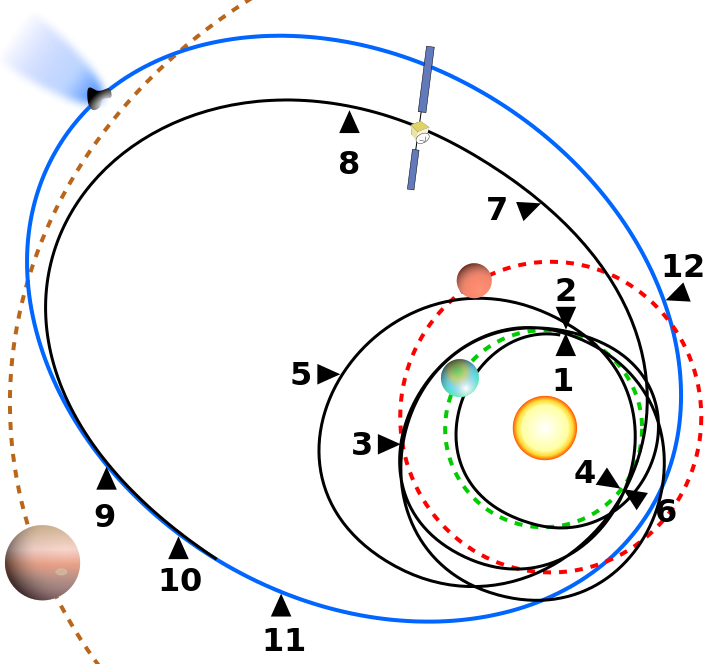 Scientists talked about decoding the latest data packets transmitted by Rosetta
Scientists talked about decoding the latest data packets transmitted by RosettaIn 2016, Geektimes
published the article “Farewell to Rosetta”, in which it was said that the research apparatus of the European Space Agency was broken on the surface of the comet Churyumov-Gerasimenko. It was decided to split the station about the comet for a number of reasons, including the relative uselessness of the Rosetta in orbit, as well as the possibility of radio interference from the station, which could lead to a distortion of any other research results.
Planning the destruction of the system, scientists also hoped that Rosetta would be able to transmit a signal, being already at the very surface of the comet, just before destruction. Unfortunately, there were no other ways to use the station, so the “drop and die” plan was implemented. But recently
it became known that before his death, the device was able to convey the "last hello" in the form of a snapshot.
Generally speaking, both Rosetta and Fila, during their mission, were able to transmit a huge amount of telemetry data and photographs to Earth, which allowed scientists to learn much more about comets than they knew before the project. And the last photo was really the point.
“The last full image transmitted by Rosetta was taken just before the collision with the surface,” said Holger Sykers, who is responsible for the operation of the OSIRIS camera. The scientist says that this photo was not recognized by the computer as an image, so the data obtained initially passed by the attention of specialists. At first, scientists saw several telemetry data packets on the server where information from the station was stored. When they discovered these packages, it was suggested that the data are in fact graphical information, that is, a snapshot.
The division of information into packets for more efficient transmission occurred still aboard the station. In the case of the last snapshot, the volume of which was 23,048 bytes, the division was immediately made into six separate packets, which the server accepted.

And the last three packets from the queue were not transmitted, the device crashed even before it became possible. The total amount of transmitted data amounted to 12,228 bytes of information. That is, it is just half of the volume required to restore the “picture”. It is logical that the computer did not take the data as a photograph and did not process the information. The computer is not, but the learned people were able to restore the photo. This was largely due to the fact that the information was transmitted in layers.
Thus, the picture was still able to be viewed, but its quality was about two times worse than the quality of an ordinary photo transmitted by Rosetta. Simply put, the picture looked the way a photograph usually looks like if it is magnified several times. A little blurry, but, in general, everything is recognizable.
Actually, if even all the packages reached the Earth, the picture would still not be much more clear. The fact is that the Rosetta cameras are designed to work at a considerable distance from the photographing object. So the fact that the device took a picture close to the surface, and this picture is more or less clear, is already surprising. The photo was taken at an altitude of about 20 meters. The penultimate shot, all of whose data packets hit the operators on Earth, was taken only slightly higher - at a height of about 25 meters from the surface of the comet.
Anyway, all the data that the Rosetta and the Filas transmitted are of extraordinary value to science, since scientists had no such thing before.
 Black is the trajectory of the device. As can be seen, before reaching the tangential trajectory to the comet Churyumov-Gerasimenko, Rosetta made four “circles” in the solar system in the region of Mars and the Earth
Black is the trajectory of the device. As can be seen, before reaching the tangential trajectory to the comet Churyumov-Gerasimenko, Rosetta made four “circles” in the solar system in the region of Mars and the EarthLet me remind you that “Rosetta” and “Fila” were sent into space 13 years ago, on March 2, 2004. Then the European Space Agency finally launched a large-scale project to study comet Churyumov-Gerasimenko. Why "finally"? Because the launch was postponed several times. In the course of its flight, the Rosette had to perform a total of four gravitational maneuvers in order to reach the necessary trajectory. The vehicle flew past Earth and Mars twice.